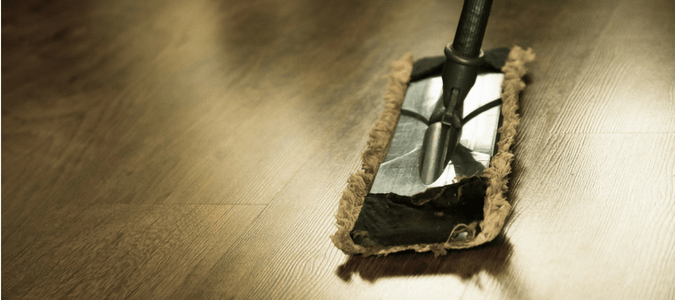Pest Control & Baby Safety: Tips For New Parents

This guide will provide you with everything you need to know about pest control and baby safety, including tips, preventative measures and more.

Pest Control Products And Baby: What Parents Need To Know
Before we go into more detail about low-impact pest control methods, let’s talk a little bit about pest control products, which are also known as pesticides. What are they, exactly?
A pesticide is a substance created to prevent, eliminate or repel a pest. As you are probably well aware, the most common pests in the Austin area include:
- Roaches
- Ants
- Spiders
- Scorpions
- Mosquitoes
- Termites
- Rats
- Mice
These substances are found in food, insect repellents, rodent control products and lawn care products. Any product labeled or advertised as being effective in controlling pests is required to be registered with the Environmental Protection Agency (EPA). Over the last decade, many products have been declared illegal in the U.S. and removed from stores to protect Americans from any possible risk from contact with these materials.
Why do we use pest control products? Although there are many different types of pesticides, you might be surprised to consider the range of uses for these products:
- Algaecides either slow down the growth of algae or kill algae entirely. Pool owners may apply these products to restore the chemical balance in the pool water and keep the pool water from turning green.
- Antimicrobials help control the spread of germs and microbes, including viruses and bacteria. For example, many day cares have antibacterial soap on hand to prevent the transmission of disease.
- Fungicides can help with rust, mold and mildew problems.
- Herbicides prevent weed growth.
- Insecticides and rodenticides do just what you expect—eliminate certain types of bugs, rats and mice.
- Insect growth regulators interfere with the reproductive process of certain types of bugs to control the population of a certain species without harming others.
- Wood preservatives protect wood against fungus, insects and other pests.
It’s no secret that babies are more vulnerable to the impact of any chemicals in their environment when compared to adults. Because their liver and kidneys are not fully developed, children’s bodies cannot expel toxins as effectively as an adult’s body can. When exposed to potentially harmful substances, babies tend to eat and drink more relative to their body size, putting them at risk for ingesting a higher level of chemicals than adults.
In addition, young children generally spend time closer to lawns, carpets and flooring where products are applied and are more likely to put their hands (and all kinds of other items) in their mouth.
If you suspect your child or anyone in your family has ingested a potentially harmful substance, you should immediately call 911 or the Poison Control Center: 1-800-222-1222. Post the national hotline for the Poison Control Center in a prominent location in your home and make sure any adult caring for your child knows where the number is located, in case an emergency arises when you are away and your child is at home.
Pests And Public Health
Pest control products are carefully designed to target certain insect, plant, parasite and animal species. The industry is highly regulated, and pest professionals are required to be licensed to apply certain types of products in different settings. What are a few of the public health risks these products are formulated to help us avoid?
Infectious Diseases
Mosquitoes, rodents and ticks can transmit serious diseases to you and your family, including the West Nile virus, rabies and Lyme disease.
Allergies And Asthma
Certain common indoor pests, including roaches, can worsen allergy symptoms or asthma.
Contamination
Food processing facilities and hospitals can be impacted by microbial contamination caused by viruses, bacteria and other microorganisms.
Bird Flu
Avian flu, an infection that is found primarily in birds, can be spread to humans.
Anthrax
Recent scares have highlighted Bacillus anthracis spores and other biological agents as not only a threat to national security, but also a public health concern.
The significant risks associated with pests cause many parents to turn to different types of pest control products. More families are choosing lower-impact options and methods which are effective at controlling pests while relying less on potentially problematic ingredients.

DIY Pest Control Tips For Parents
Being a new parent often means doing research to determine how to address any problem that comes up, whether it is related to sleep, eating or developmental milestones. Often, this means learning all we can about the possible options to make a decision that aligns with our family values.
When it comes to pest control, this usually means that many new parents opt for a DIY approach.
Want to protect your child from pests and harmful chemicals? Here are some pest control tips that every new parent should know:
Start With Prevention
The best way to keep your home free of pests and avoid chemical interventions is to prevent pests from ever entering your home in the first place. Be sure to cover garbage receptacles tightly and take out the trash frequently. Do not leave food lying out, including pet food. Keep your home free of clutter, newspapers and cardboard, since pests tend to gravitate to these items breed.
Be vigilant about keeping your home clean, which means cleaning up thoroughly after meals, avoiding eating and snacking outside of your kitchen and dining room, wiping down counters and your stovetop after cooking, paying attention to crumbs and spills and vacuuming regularly. This sounds silly before you become a parent, but you quickly realize how difficult it is to control once your toddler starts snacking and you find all types of food and drinks scattered around your home. Fix leaks and seal cracks, crevices and holes where pests could gain entry into your home.
Do Your Homework
If you do find unwelcome guests of the pest variety in your home, learn more about the pests you are dealing with. The more information you have about what different pests look like, where they live, what they eat and where and how they reproduce can help you develop a plan to get rid of these pests and keep them from coming back.
Try Natural Methods
Depending on the type and level of infestation, you may be able to discourage pests from coming inside (or outside of) your home with natural methods. Start by trying to find and seal openings in your home where pets are entering. Reduce clutter and regularly launder your window coverings, throw pillows and blankets. You may also want to try natural formulas, such as hot pepper spray, baking soda or wood ash to repel some yard pests, although you’ll need to be very careful to apply these materials far out of reach of little fingers and hands. If a particular pest control method sounds unbelievable, it probably isn’t effective.
Read The Labels
Once you begin to do research, you’ll likely hear about different natural products that homeowners find to be effective. Keep in mind that, by law, any product being marketed as a pesticide is reviewed by the EPA, which studies extensive scientific data provided by the manufacturer and uses this information to create a product label. Labels tell you who can use a particular product and how, where, how often and how much it can be used. If safety is your top concern, products without proper labeling should be avoided.
Prepare Your Home
Once you find the most low-impact and effective solution for your infestation, you’ll need to get your home ready to apply the product. Before using a pesticide, clear the affected area of all toys and food. Make sure children and pets are kept in a safe location away from the target area. Keep the same members of your household out of the area until the pesticide is dry and the area is ventilated, or according to the directions on the product label.
Follow Product Directions
It may sound silly, but the last thing you want to happen after you have put so much work into carefully choosing a product is to rush through the instructions and information about the application of the product. Take the extra time to read all the ingredients and warnings so that you use the product as intended.
Only apply pest control products to the infested area, and not the whole house or room. Never use these substances indoors if they are designed only for outdoor use. Do not apply products outdoors on a windy or rainy day. If you’re using ant, snail or rodent traps, be sure to place these out of reach of children and away from commonly trafficked areas.
Clean Up And Follow Up
After you have finished applying a pest control product, open the windows to ventilate the area. Take a shower and clean your clothes separately from the rest of your laundry. If you have leftover solution, follow instructions on the label to dispose of it. Never pour leftover these liquids down your drain.
If you do decide to keep leftover containers, store them in a cabinet with a safety latch that is out of your child’s reach. Crawl around the floor to see if you’ve overlooked dangers from the viewpoint of a baby or child. Make sure you close all bottles and packages correctly, and keep them in their original containers. Never use a container used for food or beverages to store any leftover pest control products.
If you rely on a nanny or babysitter, make sure that the individual is informed when the house is treated and aware of the associated dangers. When your children are old enough, explain to them that pest control products are never to be touched.

House Sprayed For Bugs With Baby: When Professionals Can Help
Being a new parent presents a unique set of challenges. The lack of sleep and adjusting to an ever-changing new routine can be extremely difficult. Add pests to the mix, and any well-meaning mom or dad may throw in the towel and decide it’s time to call in the professionals.
When you reach this decision, you acknowledge that experts are better equipped to combat the problem, particularly when what you have in mind is an effective, yet low-impact approach. Now more pest control companies offer low-impact techniques following Integrated Pest Management (IPM) principles that are designed to make your environment less friendly to pests.
The good news is that companies like Chem-free use a variety of IPM techniques to minimize the need for insecticides and other chemically-formulated control measures. Tactics might include the use of natural enemies to combat pests through biological control. In addition, cultural controls, including adjusting how and when you irrigate your lawn, can make a difference in the development of lawn fungus and root disease.
Physical and mechanical controls might include traps for rodents, mulch to prevent weed growth and screens to keep insects out. If these methods are unsuccessful, then you might opt for chemical controls. In these cases, products can be carefully selected to minimize the impact on soil, air and water quality and applied as more of a spot treatment to affected areas, rather than to an entire property.
When choosing a pest control company, new parents can ask the pest technician the following questions:
- How long has your company been in business?
- Are your technicians licensed and insured?
- Do you offer a free initial consultation?
- Can you work with my schedule?
- Do you offer cost estimates?
- Which type of pest control interventions do you typically recommend?
- What are the dangers associated with these types of pest control products and methods?
- Will my family need to leave while an area is being treated? If so, for how long?
- Will you need to return for follow up service?
Your pest control professional is responsible for not only for eliminating your pest problem, but also ensuring the well-being of you and your family. That’s why its essential to choose a company that is experienced, reliable and environmentally conscious.

How To Control Pests In Your Home: Chem-free Has Your Low-Impact Solutions
Being a parent is life-changing. It’s wonderful. It’s amazing. Yet, it can be overwhelming. If you are struggling with how to handle a pest problem in a low-impact yet effective way, Chem-free is a trusted resource. Whether it’s answering questions from homeowners about how to stop fleas from biting me or where do cockroaches lay eggs, our pros are extremely helpful and knowledgeable and can help you determine the best course of action. As a certified Green Pro pest control company, Chem-free is regarded as one of Austin’s most earth-friendly pest control businesses. Contact us today to schedule a free consultation, during which we will recommend the best pest control methods to meet your needs and address your concerns.
Need Help Managing Pests?
Chem-Free offers both effective, low-impact pest control options and preventative measures to help avoid future infestations. Contact us today for a free estimate!


